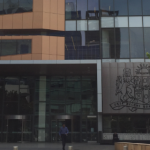Bail Assessment Officer Program Fails to Make an Impact

NSW continues to be the greatest incarcerator out of all Australian jurisdictions.
Figures released recently by the Australian Bureau of Statics reveal that 13,228 inmates were incarcerated in our state in September last year, while Queensland came in at second place with 8,458 people behind bars.
While the NSW prison population has steadied over the last 12 months, this seems like a brief respite in the rapid growth of inmate numbers over the past decade.
NSW Bureau of Crime Statistics and Research (BOCSAR) figures show that between June 2011 and September 2015, the number of people held behind bars in NSW grew by 18 percent.
This ongoing rise in prisoner numbers has occurred despite a significant drop in crime. Released in April last year, BOCSAR’s last annual crime report revealed that the state’s crime rates are at a 40 year low.
Inamtes in limbo
There were 12,989 adults detained in NSW correctional facilities in December last year, according to BOCSAR. A staggering 34 percent of them, or 4447 detainees, were on remand. These are inmates who’ve been refused bail and are awaiting the finalisation of their cases. Many of these people will ultimately have their charges withdrawn or thrown out of court.
BOCSAR researchers gave several reasons for the rise in remandees. These include an increase in police arresting offenders on more serious charges, a spike in bail breaches, a rise in the amount of time spent on remand, and a growing number of bail refusals.
The NSW prison system is overcrowded, as it was only ever designed to hold 11,000 people. And now, over a third of those behind bars are languishing in prison on remand, waiting for an increasingly delayed system to determine their innocence or guilt and, in case of the latter, whether prison is the only appropriate penalty.
Bail Assessment Officers
In an attempt to reduce the remand rate, the NSW Department of Justice introduced the Bail Assessment Officer program on August 15 2016, which also seeks to lower the overall time that inmates spend in custody on remand.
The program comprises four officers, who were initially working out of Central Local Court and Parramatta Local Court. But as the program developed, it was expanded to Blacktown, Liverpool, Mount Druitt and Penrith local courts.
The function of the bail assessment officers is to provide the courts with information about individuals that will support their bail being granted in cases where it would otherwise be refused due to a lack of information.
The officers interview defendants held in Corrective Services NSW (CSNSW) custody to obtain relevant information to support their bail application. They also help locate inmates’ family members and close friends, assist with securing accommodation and arrange appointments with healthcare providers.
These inmates have been refused bail by police and are being detained in police or court cells that are managed by CSNSW. The prisoners must then be brought before a local court magistrate as soon as practicable, usually within 24 hours.
A large number of these detainees are granted bail at their first court appearance, with many of them spending less than 24 hours in custody. But those who are refused bail at their first appearance are remanded into custody and sent to a CSNSW-run correctional facility.
An analysis
BOCSAR released its Evaluation of the Bail Assessment Officer Intervention report last week.
Written by BOCSAR’s Neil Donnelly and CSNSW’s Simon Corben, the report sought to gauge the impact the Bail Assessment Officer program has had on the NSW court system.
To evaluate the program, the researchers analysed the bail data at the two initial pilot sites at Central and Parramatta local courts, and compared it with the statistics from Burwood, Campbelltown and Fairfield local courts.
The researchers also compared the data from the sites before the trial over the period September to December 2015, and after the trial over September to December 2016. And the defendants were followed for up to 90 days after they were taken into custody.
An unfortunate result
However, the BOCSAR researchers found there was no significant change in the number of defendants being granted bail before and after the program commenced. And there was also no significant reduction in the number of days spend on remand.
These outcomes were similar for both the sites where the trial was taking place and at the local courts where it hadn’t been implemented.
While there was no overall improvement on the number of defendants being granted bail, the researchers did find that females detainees are more likely to be granted bail, as are non-Indigenous inmates. While defendants on assault charges are more likely to be refused bail.
Researchers also found that men spent a longer amount of time on bail – 23 days on average – compared with women at 14 days. And the average amount of days spent on bail for Indigenous inmates was 25, compared with 21 for non-Indigenous detainees.
A lack of clear government data
However, the BOCSAR researchers found that the conclusions they could draw from the study were limited due to the lack of program data available.
The information that was available didn’t identify which detainees the bail assessment officers were approaching with an offer of assistance, and nor did it make clear which defendants accepted the offer, and what form the actual assistance took.
BOCSAR director Dr Don Weatherburn said in a release that more research needs to be conducted into the sort of information that might be needed by courts to support bail applications.
And the researchers also pointed out that while their report showed there was no real impact on bail outcomes, BOCSAR figures do show that the remand growth rate has slowed.
For the 12 months up to March last year the remand rate increased by 6.3 percent, whereas in the 12 months to June last year it had only increased by 1.7 percent.
The other solution
Meanwhile, the NSW government is looking at other ways to deal with a rising prisoner population. It’s currently investing $3.8 billion to fund an extra 7,000 prison beds, which allows for an increase in room to accommodate more than half the current number of prisoners inside.
The funding covers the re-opening of Berrima gaol and two rapid-build expansions at Wellington and Cessnock prisons. It also contributes to the construction of what will be Australia’s largest prison, the privately-run Grafton Correctional Facility, which will have the capacity to detain 1,700 prisoners.
And while the fact that the number of NSW prisoners has stabilised over the last 12 months might make it seem like the government won’t be able to fill these burgeoning correctional centres – think again.
As Dr Weatherburn has explained there’s actually been an increase in the number of offenders released on parole and this has offset the continuing large numbers of inmates coming into the prison system.
Once the extra accommodation is available, it would make good economic sense to let the inmates stay, rather than evicting them early.








